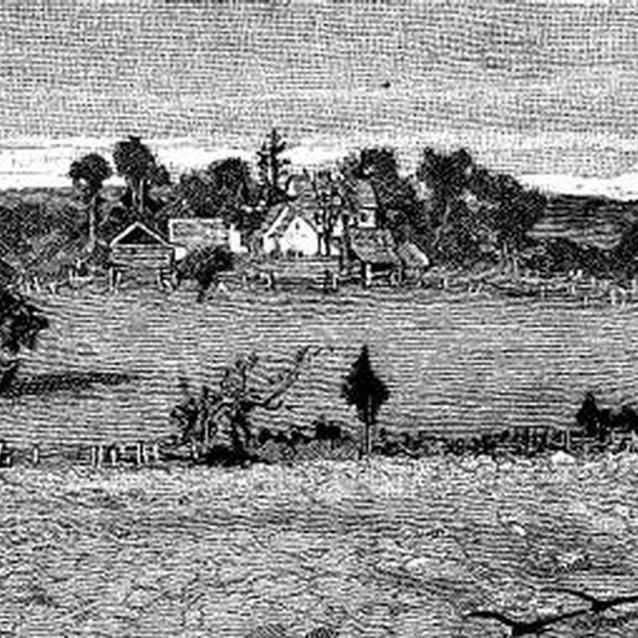"The Robinson House is used as a Yankee hospital. In a visit there this morning, I found 100 of them [Yankees] packed in the rooms as thick as sardines..." Felix Gregory de Fontaine, Charleston Daily Courier, September 11, 1862
James Robinson

Daphne C. Dador
For nearly a century, the Robinson House, located in what is now the Manassas National Battlefield Park in Manassas, Virginia, was home to the descendants of James Robinson.
Born a free African American in 1799, Robinson served a short indenture as a young man before working in a Virginia tavern where he earned the $484.94 needed to purchase 170 acres of land near Bull Run. In 1842, he built a small log cabin, which was enlarged and renovated several times over the years.
Through hard work and perseverance, the Robinson family turned the surrounding land into a prosperous farm, making James Robinson one of the wealthiest African Americans in the Manassas area in the mid-19th century.
On July 21, 1861, as the First Battle of Manassas raged around the Robinson House, James Robinson sent his family to safety at a nearby home. Unable to join them, Robinson hid under a bridge, emerging after the battle to find 13 Confederate soldiers lying dead in his front yard.
Barely one year later, in late August 1862, the Robinson House served as a shelter for Union dead and wounded during the Second Battle of Manassas. Despite the ravaged landscape, James Robinson and his family found the spirit to overcome the war's destruction and to fashion for themselves an identity that was uniquely African and American.
Archeology at the Robinson House
Very few pre-Civil War free African American homesteads exist for archeological study, making the Robinson House unusual. According to the National Historic Preservation Act of 1966, federal agencies must properly maintain historical and cultural resources located on lands they manage or own. Therefore, the home's location within the Manassas National Battlefield Park prevented it from being torn down.
The historic house was occupied by Robinson's family until the early 20th century, eventually becoming the victim of arson in 1993. The family, which maintained a deep connection to the site, was understandably disturbed by the home's near-total destruction. Sensitive to their feelings, park officials contacted the Robinson family after the 1993 fire in order to reach a consensus about what to do with the site.
Work Plan

National Park Serivce
Park officials and family members were faced with two choices: stabilize the still-standing parts of the house and rebuild the portions that were destroyed by the fire, or tear down the remaining structure and conduct archeological and architectural studies of the material remains.
Rebuilding the house would reestablish a visual memorial to the family and other African Americans, but archeological research could reveal new insights into the changing lifeways of free African Americans. It could also provide a more deeply researched commemoration of their lives.
Working together, park officials and family members decided to proceed with the archeological research, which included excavation, architectural studies, and oral history interviews with James Robinson's descendants.
An Amazing Find
While dismantling parts of the house for excavation and architectural study, an incredible find surfaced. Wedged behind the insulation in the attic wall, awaiting discovery, were dozens of Robinson family account ledgers, letters, bills, and invoices - some dating back to the 1830s.
Despite being worn and yellowed by time, the documents provide invaluable information about James Robinson's business transactions. These papers, often referred to as the Robinson Papers, supply evidence of the ways in which free African Americans negotiated their difficult social and economic circumstances.
Last updated: July 16, 2021
